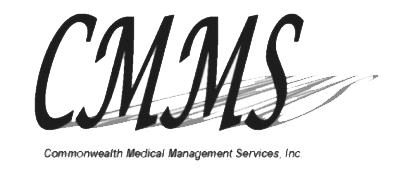Read the below SuperCoder.com Article for more information on potential avenues to increase billing revenue (Revenue Booster) in 2016:
Published by: SuperCoder, Mon, December 07, 2015
Part B Revenue Booster: This One Tip Can Boost Your Practice’s Income by Thousands
– Published on Mon, Dec 07, 2015
Make 2016 your highest income year ever.
As you close the books on your 2015 billings, you may be noticing some trends that don’t point toward a happy new year—whether it involves revenue targets that your practice wasn’t able to meet, write-offs that hurt your bottom line or other billing issues.
Fortunately, you have a chance to make 2016 a happier year from a cash flow perspective. The Insider has partnered with several billing experts to get the tips that can help you stop making billing errors and start collecting more revenue. We’ll be talking to a different billing professional each week to deliver advice that will make your 2016 a little bit happier and more profitable.
making billing errors and start collecting more revenue. We’ll be talking to a different billing professional each week to deliver advice that will make your 2016 a little bit happier and more profitable.
Read on for tips from this week’s expert, Vinod Gidwani, founder of Currence Physician Solutions in Skokie, Ill., who shared his experiences handling medical practices’ billings with the Insider this week.
Ensure You’re Getting Contracted Amounts
One big area where Gidwani sees practices losing money consistently is in reconciling payments against the corresponding contracted fee schedules. Once you contract with a payer, you should expect to receive the contracted amounts for all of your services—but you can’t simply trust the insurer to send you those fees. You should double-check your receivables and ensure that you are collecting exactly what you agreed to when you signed the contract.
“In 2016, practices should review all their managed care contracts and take a sample of some payments from all insurance companies and match the payments against their respective contracted fee schedules,” says Gidwani, whose company measures the financial performance of medical practices to ensure that their billings are optimal. “Any discrepancies must be brought to the attention of the insurance company and if the situation warrants, the practice should request a re-adjudication of claims paid incorrectly.”
Example: Suppose the insurer is shorting you $1.00 every time you report 99213. If you bill this code five times a day, you’re losing $1,300 a year due to that simple oversight.
It is also important to ensure physicians are credentialed correctly for all locations of the practice, Gidwani adds. “With all the new insurance companies competing in the marketplace under the Affordable Care Act, accurate credentialing will avoid claims being denied. The practice should also check all the insurance websites it has contracted with, to make sure all the physician names appear on the website under the ‘Doctor Search’ button.”
Pre-Check Eligibility
In addition to being a watchdog over your payers, you should also enact a few standard practices within your medical office to ensure you are prepped and ready to collect the maximum amounts that you’re due, Gidwani says.
One area where you can capture payments from the get-go is to check patient eligibility before they present to your practice, he advises. “It’s equally important to look at those eligibility reports—they have a wealth of information on benefits, deductibles, co-pays, etc.,” he advises. “Having this knowledge prior to the visit empowers the front desk to set the right expectations on collecting balances from the patient. It is also important for the practice to have a clear financial policy that is communicated effectively with the patient.”
In addition, insurers may require pre-authorizations for services that they previously did not, which could end up costing you down the road if you don’t comply. “The expansion of Medicaid to managed care as well as the proliferation of Medicare Advantage plans now require prior authorizations for many services rendered,” Gidwani says. “The practice should know when prior authorizations are required and ensure they get these authorizations prior to the service being rendered.”
Don’t Let Denials Rise Too High
Another way to ensure that money keeps flowing into your practice is to catch denials before they pile up, Gidwani says. “Make sure that the percentage of claims denied on first submission is five percent or less,” he notes. “The cost to follow up denied claims is very high, which increases billing costs and negatively impacts the bottom line.”
In addition, when a patient calls regarding a bill, use the conversation as an opportunity to collect from the patient, he adds. Spend as much time as necessary to explain the bill to the patient, and answer the patient’s questions methodically and patiently. You don’t want to miss the opportunity to collect outstanding balances due from the patient.
“In summary, there are no ‘short cuts’ in the medical billing process, nor does one need ‘magic’ in their hands to collect dollars efficiently,” says Gidwani, who offers more information on medcurrence.com. “Being diligent, thorough, knowledgeable, compliant and pro-active throughout the process will always bring positive results.”
